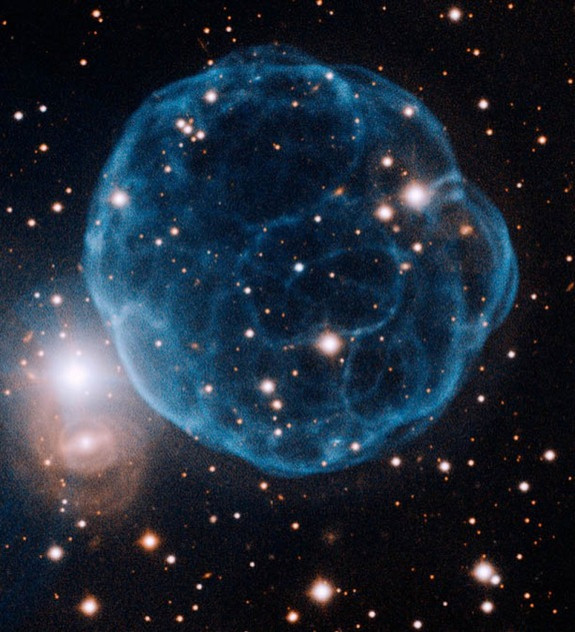New Planetary Nebula Discovered [PHOTO]

The soccer-ball shaped puff of interstellar gas was discovered by an amateur astronomer, in what is said to be one of the best looks at a planetary nubula, which are created by the last breaths of a dying star, Wired reported.
Matthias Kronenberger, a member of an astronomy club called the Deep Sky Hunters, first discovered the phenomenon, which was then confirmed by a team led by Dr. Orsola De Marco of Australia's Macquarie University.
The nebula's existence, which is named Kronenberger 61 after the astronomer who discovered it, was announced at a symposium in Tenerife, Spain on July 25.
The team took advantage of the Kitt Peak National Observatory in Arizona to focus on Kn 61 and have it added to the observation list for NASA's Kepler Space Telescope.
"Planetary nebulae present a profound mystery," De Marco said. "Some recent theories suggest that planetary nebulae form only in close binary or even planetary systems. On the other hand, the conventional textbook explanation is that most stars, even solo stars like our sun, will meet this fate. That might just be too simple."
But the fine of a new planetary nebula is rare.
"Explaining the puffs left behind when medium-size stars like our sun expel their last breaths is a source of heated debate among astronomers, especially the part that companions might play," De Marco said. "It literally keeps us up at night."
And according to George Jacoby, a Kepler astronomer who requested the help of Deep Sky Hunters, the discovery couldn't have been made without amateur help.
"Without this close collaboration with amateurs, this discovery would probably not have been made before the end of the Kepler mission," said George Jacoby of the Giant Magellan Telescope Organization and the Carnegie Observatories in Pasadena, Calif. "Professionals, using precious telescope time, aren't as flexible as amateurs, who did this using existing data and in their spare time. This was a fantastic pro-am collaboration of discovery."
© Copyright IBTimes 2025. All rights reserved.





















